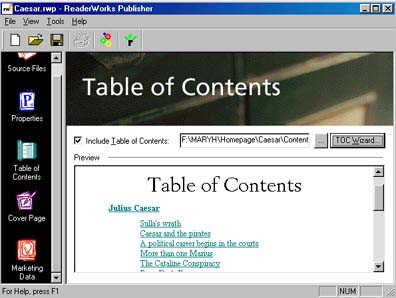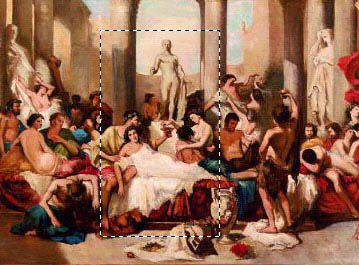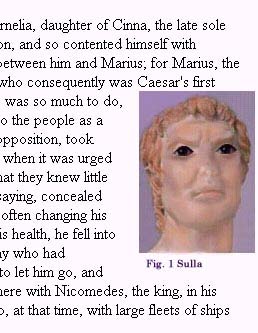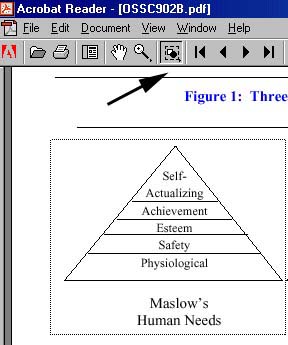If one thing was abundantly clear to me when I made my annual pilgrimage to the technology trade show Comdex in the fall of last year, it was the accelerating importance of handheld devices. There is an explosion of styles, peripherals, and applications for these units. IBM (2000, ¶ 2) describes the market for handheld devices best:
The demand for anywhere, anytime access is pushing Internet access away from the PC and into a variety of mobile devices. Devices such as the telephone, home appliance, automobile or PDA will supplant the desktop for information access as customers are no longer content with waiting to get to a PC for information retrieval.
Students, like the computer users described by IBM in the quotation above, lead increasingly demanding lives requiring almost constant mobility. Some campuses have installed wireless network systems for campus-wide Internet access, but this approach requires student investment in a laptop and wireless network adapter. Laptop prices, although dramatically reduced in recent years, still average over $1,500, and laptops still weigh too much to carry all day long. Students typically attempt to stop by a crowded computer lab or wait until they return home at the end of the day to use a desktop—if they have one. Some institutions have placed the burden of technology access on students by requiring them to own a computer when they matriculate. But most address the problem by offering departmental computer labs. These labs frequently contain fewer than 50 workstations that are expected to serve 1,000 students. Even if students get a seat in a lab, it is difficult for them to sandwich lab time between classes and jobs. These complaints are discouraging to faculty members who have made a valiant effort to capitalize on technology's benefits by providing extensive Web-based course materials.
Handheld devices, most selling for under $500, offer a more economical, more portable alternative. Although their memory capacity (32-64 Mb) may seem miniscule compared to modern workstations with gigabytes of storage and gigahertz processors, these compact devices can store a small library, since a 300-page novel can be reduced to a 250k file (Microsoft, 2000a, ¶ 19). Furthermore, content can be combined with a digital rights access server, allowing the text to be distributed but assuring authors' copyrights (Microsoft, 2000b). Sales of texts, research findings, or course materials to other interested students, professionals, alumni, institutions, or the general public could produce additional revenue.
However, since I get eye strain after staring at a computer screen all day, I was skeptical about using a handheld device for my primary information management tool. I had read Ian Austen's (2001, ¶ 11) evaluation of the reading experience on devices using the Palm operating system: "Unfortunately, the relatively low screen resolution of devices using the Palm operation system made the pixels that formed the letters painfully obvious. Italic letters often appeared as an incomprehensible jumble." So I stopped by the Microsoft solutions pavilion and explored the latest release of the Microsoft Reader, the text-viewing application of choice for units using Microsoft's Windows CE or Pocket PC operating systems. (There is no version of Reader for devices using the Palm OS). The software was demonstrated to me on an HP Jornada Pocket PC, and I found the text quite readable. I was also shown a new free plug-in for Microsoft Word 2000 (also available in a Pocket PC version) that allows me to save any Word document as an "e-book" in Reader format.
From a user's perspective, the Reader software not only provides near-paper reading quality, but also lets users annotate, search, bookmark, highlight, and index quotations. When the device is used with the freely provided Encarta dictionary, a reader can also easily look up a definition simply by right-clicking and selecting "Lookup" from the pop-up menu.
From an author's perspective, the format produces a file that cannot be reverse-engineered easily and it protects images from appropriation by a simple right-click. As I considered the potential for publishing electronic textbooks, normally very expensive because of the limited market and typically small press runs, I became more excited about the software's potential for writing and publishing than I was initially about its use as a reading application.
Naturally, when I returned home I wanted to try it out for myself. Although I don't currently have a Pocket PC, I downloaded the free Reader software, the free Encarta dictionary file, and the free plug-in for Word 2000 to my desktop PC. I had no problem converting a simple Word document to an e-book. But I wondered how commercial e-books displayed a custom cover image and title page and how successfully I could convert more sophisticated and complex documents with images.
I noticed that the Reader guidebook refers to commercial publishing software produced by Readerworks, so I visited its Web site. There I found that Readerworks's software not only allows cover images, but also library thumbnails and specially sized graphics for Pocket PC displays. The software also incorporates a table of contents wizard, and it accommodates bibliographic information—author, publisher, illustrator, translator, and the time period covered by the text—allowing readers to locate the e-book in a collection or an e-library.
I also noticed that the company offers a free copy of its commercial Publisher software to educators who agree to use it solely for educational materials. I applied and was approved within minutes, so I downloaded the software and began to explore it.
I discovered that Readerworks can build an e-book from a list of text or HTML files as long as all files for a particular e-book project are stored in the same folder. For example, if I were creating an e-book about Julius Caesar, I would create a folder called "Caesar," put all text and image files associated with the e-book into it, and save the Readerworks project file into that folder as well.
Readerworks also specifies image sizes for different cover pages and image file formats: JPG, GIF, or PNG. Individual image files can be included in a source file list and placed automatically on a separate page.
I downloaded Microsoft's source materials and conversions handbook and layout guide (both available in Word or Reader format) for more specific guidelines on image size and the maximum number of images recommended for an e-book. These reference documents are written with the assumption that users hand-code HTML documents for conversion to Reader format. Since most of this work is done automatically by the Readerworks Publisher software, I didn't study the guidelines too closely. However, I did notice some important considerations for all users:
- Even though the guidelines recommend creating a separate file for each chapter, Reader can search within only one file at a time. With this in mind, I suggest that the body of the work be composed as a single document with embedded images and large-font subheadings to provide sequential links in the table of contents, as indicated in the graphic below:

- Using a single file for the body of the work also allows users to search the entire text at once. The forward, bibliography, appendices, and index can be separate files without seriously hindering the search function.
- Since Reader automatically sizes content for a wide range of display sizes, images may be distorted if they are radically resized. Therefore, users should size images for small displays. I found that headshots are adequate at only 2 inches high. Consider cropping more complex images to avoid loss of detail, as illustrated here:

- Captions are also problematic. Readerworks does not have a caption feature, which means that captions must be included in the images themselves (another reason to avoid resizing). The layout guide suggests font sizes of no less than 10 points. Since a detailed caption for a small image can easily exceed the image's height, labeling the image as Fig. 1 with a short title may work best. The author may elaborate on the caption in a separate list at the end of the book. A single 10-point line of text could be added to a two-inch image by adding only about 20 pixels to the height. In the image below, a short caption has been included as part of the image (a bust of Sulla), which is shown along with the text to which it belongs:

- The guidelines recommend that an e-book contain no more than 10 large images or 20 small images ("large" and "small" are not specifically defined) because of the low bandwidth speed and long download time of average modems.
- The current version of Reader cannot interpret dynamic data, so avoid animated GIFs, java applets, or scripts. Transparent GIFs do not render properly as cover images. At least for now, think of the early days of Web page design: text and images only.

- The current version of Reader does not render tables and graphs adequately. If a table is necessary, consider creating it in Word, saving it as an Adobe Acrobat PDF document, and then using the graphics tool in Acrobat to "harvest" the image as demonstrated at right (the arrow points to the harvest tool). This is accomplished by opening the PDF document with Acrobat, selecting the table with the graphic selection tool, copying the selected portion to a workstation's clipboard, and then pasting the clipboard contents into a new image document (Photoshop, Paint, etc.). I found that this method produces a much crisper image than that produced by scanning the same table from a hard copy using a high-resolution scanner.
- For each file included in the source documents, the Readerworks table of contents wizard derives a primary heading from the HTML document title tag in the <head> section of the document. Therefore, be sure that the document title is correct before adding the file to a list of source files. Readerworks seems to store this information once the file is added to the source files list and does not refresh the information if the actual document title is edited later. To edit a document title, remove the file from the document list, edit the title, add the document back to the source files list, and run the table of contents wizard again, (e.g., <head><title>Julius Caesar</title></head>).
E-book publication provides an opportunity for reduced textbook costs for students already facing ever-increasing tuition expenses. It also provides the capability to produce handbooks, course materials, and even modified versions of departmental Web sites for students and busy parents taking advantage of new advances in handheld technologies. E-book publication could even help students avoid chiropractor bills from toting around all of those heavy bookbags!
References
Austen, I. (2001, January 4). Rebooted any good books lately? The New York Times On The Web. Retrieved March 14, 2001, from the World Wide Web: http://www.nytimes.com/2001/01/04/technology/04BOOK.html.
International Business Machines. (2000). IBM software: Enterprise voice solutions. Retrieved January 4, 2001, from the World Wide Web: http://www-4.ibm.com/software/speech/enterprise/.
Microsoft Corporation. (2000a). Microsoft reader: Frequently asked questions. Retrieved March 19, 2001, from the World Wide Web: http://www.microsoft.com/reader/faq.asp#what_size.
Microsoft Corporation. (2000b). Microsoft reader: Microsoft digital access server. Retrieved March 19, 2001, from the World Wide Web: http://www.microsoft.com/ebooks/das/benefits.asp.
downloadable gamesdownloadable pc gamespc gamesbest pc gameskids gameshidden object gamesbrick bustermatch 3 gamesword gamesmanagement games

